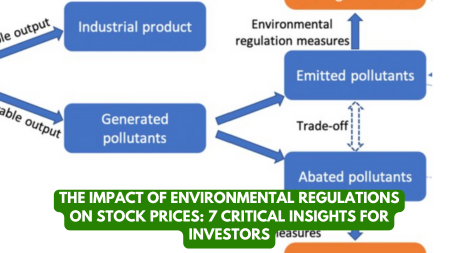No products in the cart.
Stock Market
The Impact of Environmental Regulations on Stock Prices: 7 Critical Insights for Investors
The Impact of Environmental Regulations on Stock Prices: 7 Critical Insights for Investors
In an era of increasing environmental consciousness, the relationship between environmental regulations and stock prices has become a critical consideration for investors. The Philippines, with its unique ecological landscape and evolving regulatory environment, presents a particularly interesting case study for understanding this complex dynamic.
Understanding Environmental Regulations and Market Dynamics
Environmental regulations represent government-mandated rules and standards designed to protect natural resources, reduce pollution, and mitigate climate change impacts. These regulations can have profound and multifaceted effects on corporate performance and, consequently, stock prices.
The Philippine Context: A Unique Regulatory Landscape
Emerging Environmental Policy Framework
The Philippines has been developing a robust environmental regulatory framework, characterized by:
- Comprehensive Environmental Laws
- Clean Air Act
- Ecological Solid Waste Management Act
- Renewable Energy Act
- Climate Change Act
- International Commitments
- Paris Agreement compliance
- United Nations Sustainable Development Goals
- Increasing focus on green economic development
Direct Impact of Environmental Regulations on Stock Prices
1. Compliance Costs and Financial Performance
Environmental regulations often introduce significant operational expenses for companies:
- Increased Capital Expenditures
- Pollution control equipment
- Emissions reduction technologies
- Waste management infrastructure
- Operational Modifications
- Process reengineering
- Sustainable technology investments
- Workforce training
2. Sector-Specific Implications
Different industries experience varying degrees of regulatory impact:
High-Impact Sectors
- Energy
- Manufacturing
- Mining
- Agriculture
- Transportation
Low-Impact Sectors
- Technology
- Services
- Digital industries
Financial Market Reactions to Environmental Regulations
Investor Sentiment and Stock Valuation
Environmental regulations influence stock prices through multiple channels:
- Risk Perception
- Regulatory compliance as a potential financial burden
- Uncertainty about future regulatory developments
- Potential for significant financial penalties
- Investment Attractiveness
- Companies with proactive environmental strategies
- Demonstrated sustainability commitment
- Long-term resilience
Case Studies in the Philippine Stock Market
Successful Adaptation Strategies
Energy Sector Transformation
- Shift towards renewable energy
- Reduced carbon emission investments
- Attractive to environmentally conscious investors
Manufacturing Sector Innovations
- Green technology implementation
- Circular economy approaches
- Enhanced operational efficiency
Investment Strategies in a Regulated Environment
For Institutional and Retail Investors
- Comprehensive Due Diligence
- Assess companies’ environmental compliance
- Analyze regulatory risk management
- Evaluate sustainability reporting
- Long-Term Investment Perspective
- Focus on adaptive companies
- Prioritize sustainable business models
- Consider environmental, social, and governance (ESG) ratings
Emerging Trends and Future Outlook
Technological and Regulatory Innovations
- Green Finance Mechanisms
- Sustainable investment funds
- Green bonds
- Carbon credit trading
- Technological Solutions
- Clean technology investments
- Artificial intelligence in environmental monitoring
- Advanced sustainability tracking
Economic and Market Implications
Broader Economic Perspectives
- Competitive Advantage
- Early adopters of environmental standards
- International market positioning
- Enhanced global competitiveness
- Job Creation
- Green technology sectors
- Sustainable infrastructure development
- Skills transformation
Challenges and Opportunities
Navigating the Regulatory Landscape
- Regulatory Complexity
- Evolving legal frameworks
- Interpretation challenges
- Compliance costs
- Investment Opportunities
- Emerging green sectors
- Sustainable technology
- Environmental service providers
Conclusion: Strategic Environmental Awareness
Environmental regulations are not merely a compliance requirement but a strategic imperative for modern businesses. Investors who understand these dynamics can make more informed decisions, identifying opportunities and mitigating risks in an increasingly environmentally conscious market.
Key Takeaways
- Environmental regulations significantly impact stock prices
- Proactive adaptation is crucial for corporate success
- Long-term perspective is essential
- Continuous learning and monitoring are key
Disclaimer
Investment decisions should be based on comprehensive research and professional financial advice. Environmental regulations and market conditions are dynamic and subject to change.
READ MORE RELATED BLOGS!
READ MORE AND SHARE!
TSOK Chronicles: Unleashing Passion, Dedication, and Excellence in 2024
2023 Your Practical Wedding Guide
Investments and Finance Ultimate Guide
If you like this article please share and love my page DIARYNIGRACIA PAGE Questions, suggestions send me at diarynigracia@gmail.com
You may also follow my Instagram account featuring microliterature #microlit. For more of my artworks, visit DIARYNIGRACIA INSTAGRAM


Peace and love to you.